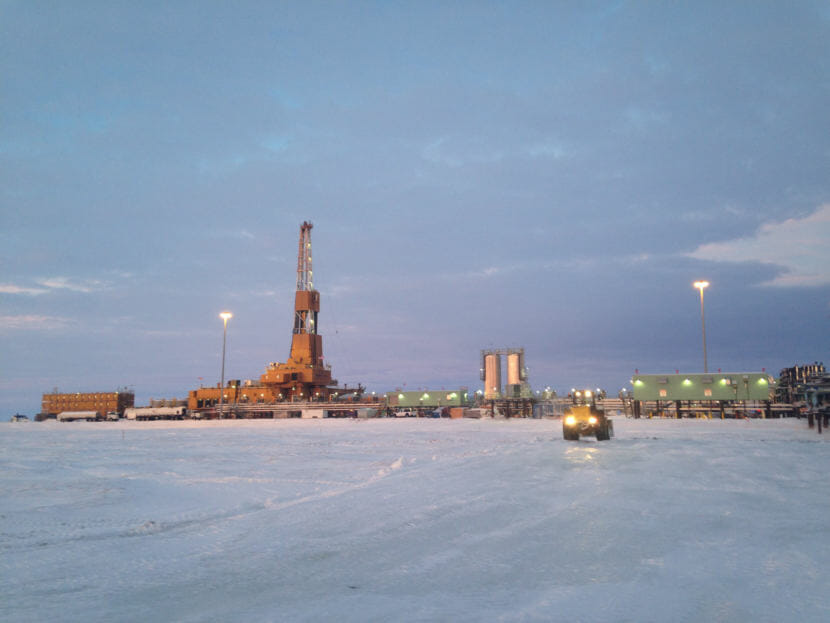
Four oilfield service companies have alerted the state of sweeping layoffs at their North Slope operations as the coronavirus crushes demand for fuel, oil prices crash and drilling activity declines.
The job cuts announced in Alaska include 63 layoffs at Baker Hughes, 81 at the Schlumberger Technology Corp., about 80 at Halliburton Energy Services and more than 50 at the Peak Oilfield Service Co., according to the companies’ notices sent to the state over the past month, the most recent filed Monday.
“I think that’s just the first glance at what’s coming,” said Rebecca Logan, chief executive of the Alaska Support Industry Alliance, an oil and mining trade group.
Across the country, companies that provide oilfield services and equipment are cutting jobs and bracing for bankruptcy as the pandemic launches the oil and gas industry into a tailspin. Baker Hughes, Schlumberger and Halliburton have dismissed workers and slashed spending at their operations across the globe.
Logan described the past few months as a “double whammy” for service companies on the Slope. First came the virus and travel restrictions that complicated the typical two-week rotations. Companies also slimmed down to essential functions to reduce the number of workers at camps.
Then came the rapid drop in oil prices.
“That pretty much took the wind out of everyone’s sails,” Logan said. “Now there’s not really work to go back to.”
Oil giants including ConocoPhillips have cut spending in Alaska and reduced drilling on the Slope. The company that runs the trans-Alaska pipeline also recently cut North Slope oil production by 10% as the world wrestles with a glut of oil that’s filling up storage tanks.
According to the service companies’ notices to the state, the layoffs include heavy equipment operators, engineers, technicians, mechanics and others.
In the notice dated Monday, a representative for Baker Hughes wrote that the pandemic poses unprecedented challenges.
“These unforeseeable business conditions and the COVID-19 natural disaster have suddenly, dramatically and negatively impacted the market and reduced the overall need for the services and products provided by Baker Hughes,” the notice said.
Alaska had an estimated 6,350 oil industry service jobs in 2019, according to Neal Fried, an economist at the state Department of Labor and Workforce Development.
The department is still tabulating how the pandemic has impacted the state’s workforce numbers in March and April, with the new data expected to be released in May.
Fried said he anticipates the data will show more job losses in the oil and gas sector than what’s revealed in the notices filed with the state. Only certain factors trigger a notice such as plants closing and mass layoffs.
Logan said she doesn’t expect the downturn to end anytime soon. Neither does Tom Walsh, board president of the Alaska Support Industry Alliance and managing partner at Petrotechnical Resources of Alaska, an oil and gas consulting firm.
“The workload is going to diminish further,” he said. “I think this is the beginning of the downturn and I think it will be far more impacting than what we’ve seen so far.”
Walsh said he expects his company’s workload to decrease by at least 30% over the next few months. The company doesn’t employ many full-time workers, he said, so they haven’t gone through layoffs but, without work to do, some have filed for unemployment.
Last week, the estimated value of a barrel of North Slope crude dropped to an unprecedented negative $2.68 on Monday and crawled back to $11.60 by the end of the week — still the lowest price since the late 1990s. By Monday, it had fallen again, dipping to $8.97.
Walsh said the price collapse comes as the industry is just starting to recover from the last downturn.
The total number of oil and gas jobs in Alaska plummeted from about 15,300 in late 2014 to 9,100 three years later, rising back to an estimated 10,500 jobs by this February.
‘We’ve never really clawed back any margins,” Walsh said. “And now this hits and, it’s like, there’s just no more room to squeeze anything out of the costs of doing business up here.”
